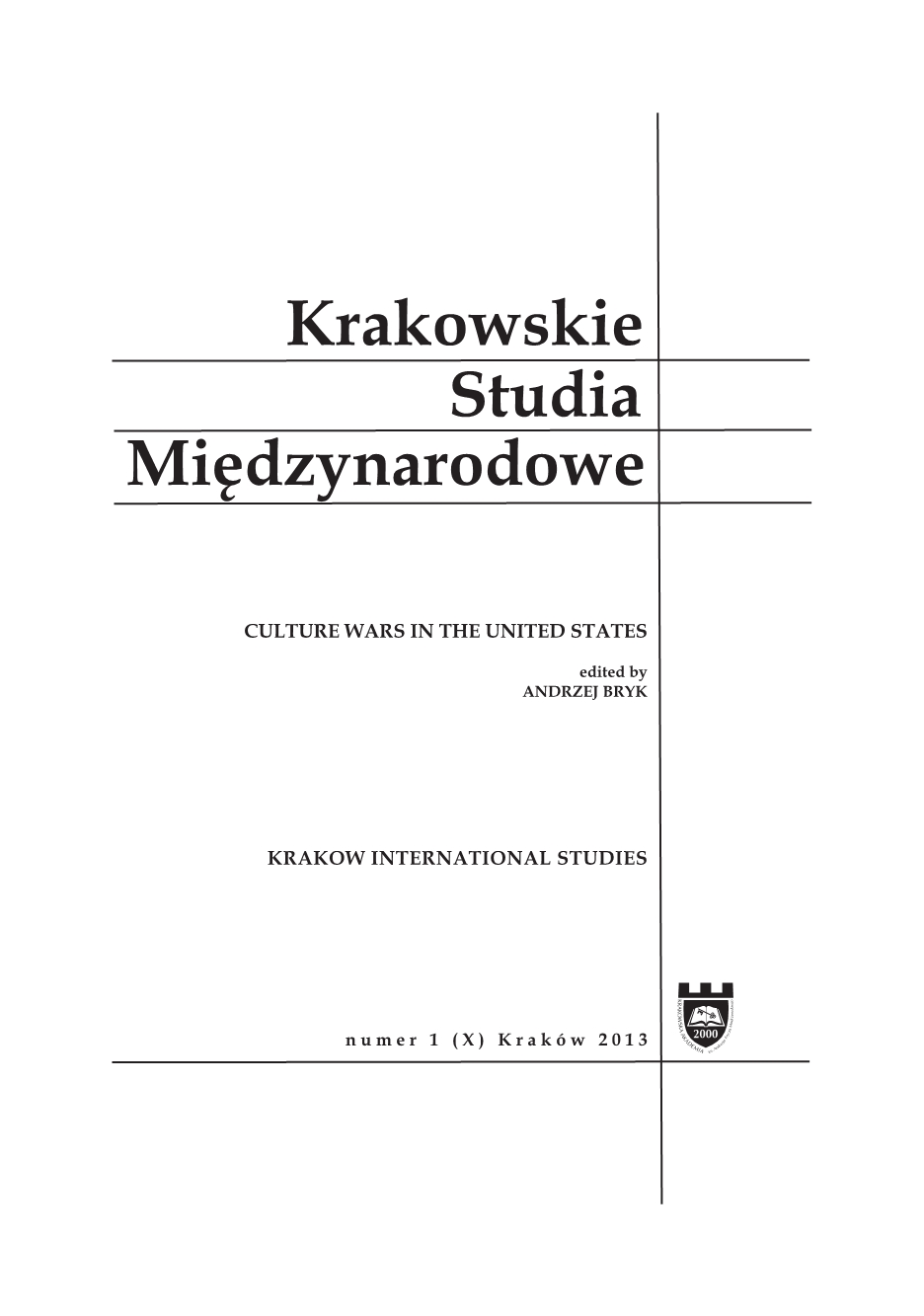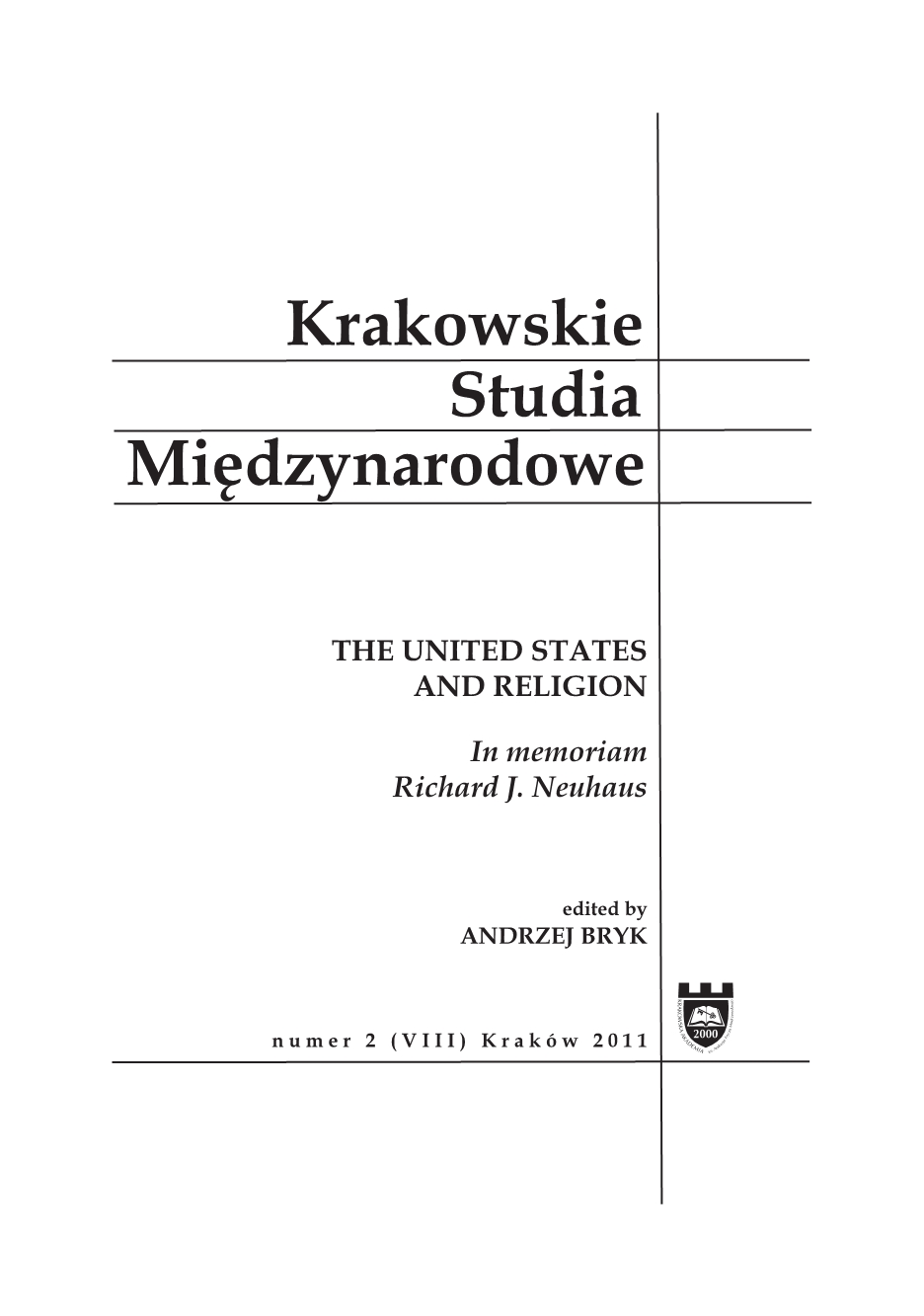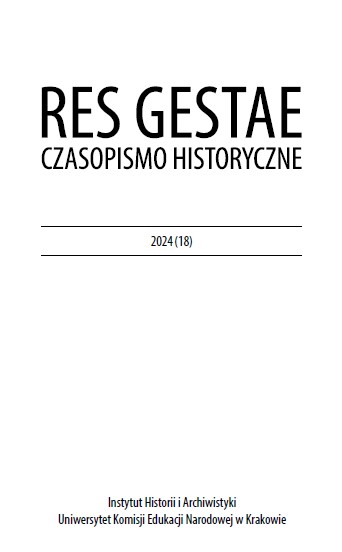
We kindly inform you that, as long as the subject affiliation of our 300.000+ articles is in progress, you might get unsufficient or no results on your third level or second level search. In this case, please broaden your search criteria.




The documented history of Jews in the Balkans can be traced back to the early Middle Ages and has been studied by researchers from diverse perspectives. Undoubtedly, it is a vibrant, dynamic and tumultuous story, set at the crossroads of multiple intersecting cultures and social groups. Although the Second World War profoundly impacted the Jewish world, it did not bring about its end.
More...
The activity of the Jewish leaseholders should be considered as the one of the most important elements enabling the proper functioning of the Sieniawski-Czartoryski estates. The intensified activity of the representatives of the Jewish faith had also a significant impact on the shape of their relations with non-Jews, including other leaseholders. The trial records remain a direct evidence of described state of affairs.
More...
Keeping the text of the Jewish Holy Scriptures intact is a goal that has accompanied many gene rations of adherents of Judaism. The conviction that the biblical text is the Word of God obliged to a scrupulous care for faithful transmission. Jewish scholars called Masoretes developed a system of accents and vowels for the texts of the Hebrew Bible. Their mission also included ensuring that nothing was altered in the transcription of the sacred texts. The statistics they included at the end of the books and the marginal notes became a safeguard for the message. The results of their work are an invaluable contribution to biblical and cultural studies.
More...
Artykuł prezentuje dotąd nierozwinięte, w szczególności w polskiej literaturze przedmiotu, zagadnienie obecności i miejsca antysemityzmu w krytyce dwudziestolecia międzywojennego. Przede wszystkim jest jednak próbą analizy retoryki antysemickiej badanej przede wszystkim na podstawie prasy nacjonalistycznej. Przedmiot uwagi stanowią tu zarówno kryteria wartościowania dzieł (tak sztuki awangardowej, jak i tradycyjnej), wybór tematów i stosunek artystów do rzeczywistości, jak też retoryka ocen (barwa, rysunek, jakości estetyczne). Analizie poddane zostały chwyty stylistyczne i strategie retoryczne mające zdewaluować i zdyskredytować artystów pochodzenia żydowskiego, ukazać obcość ich sztuki, a zwłaszcza odrębność wobec twórczości „rdzennie polskiej”.
More...
When Isaiah 40:18 asks “To whom might you liken God? What likeness might you set up for him?” readers of Isaiah 40-55 encounter potent rhetoric that invites analysis. Recognizing that corporeality is key to the rhetoric of Isaiah 40-55, spatial theory and disabilities studies offer promising hermeneutical approaches to analyze the bodies of Isaiah 40-55. By synthesizing these approaches, this study establishes a mixed-methods approach which it then applies to representations of corporeality in Isaiah 40-55. This mixed-methods analysis reveals an underlying corporeal-spatial rhetoric throughout Isaiah 40-55. Characters portrayed with only a single reference to their body tend to remain insignificant. Characters with two or three references to their body typically appear in weak (straw man) arguments. Characters represented with greater corporeal complexity (i.e., more than three body parts) prove to be rhetorically complex figures. Identifying comparable complexity in God’s body and the body of the Servant, the conclusion emerges: liken God to the (disabled) Servant.
More...
The research aims to identify the most important text thresholds found in the monetary achievement at Prof. Dr. Faziz Taha Omar and study them in detail with an indication of the reasons for their formulation as such. They were employed on two indicative and another synthetic levels, starting with the title threshold that is the first threshold of each literary text and then the cover threshold that serves as a visual input to the subject of the text, Followed by the gifting threshold which serves as a parallel text to the original text and is no less important than the rest of the thresholds, The search concludes with the threshold of the introduction representing the input and the initiation before the basic text.
More...
During his long stay in Venice and Padua around the end of the 15th century, the outstanding philologist and biblical scholar Elia Levita came into contact with an incunabulum containing the knight's story of Buovo d'Antona. It was a Renaissance romance whose roots stretched back to the Anglo-Norman epics of the 12th century. The Levite adapted the Venetian version for a vernacular-speaking audience of the Jews of southern Germany. The work did not appear in print until 1541.Comparing earlier versions with later adaptations in Italic languages, including Venetian incunabula, one can notice that geographical references become intertextual, referring to the existing narrative canon, and not to the realities of cities such as Mainz at that time. The Levite places the beginnings of his narrative within the Venetian culture and politics and famous events of the era, such as wars for control over the Sforza territory or raids by Barbary corsairs. The pedagogical intention of the scholar is visible here, as he wanted to provide readers not only with entertainment, but also with knowledge, even if just superficial, of the world beyond the local community. However, it is limited to the circle of Venetian cultural identity. When the narrative begins to unfold beyond Venice, its land borders and established sea routes, Levita also introduces non-places, i.e. invented spaces, for example the city of Armonia.
More...
Charity in the communities of the Polish-Lithuanian Commonwealth was generally directed at its own residents, but in the case of the fund for the poor of the Land of Israel, it was seen as a universal obligation and was a concern of the Jewish councils. Three types of money were sent to the Land of Israel at the same time: intended for the general poor there, for specific recipients, and interest on loans made by those who later emigrated. By the end of the 16th century, the four main Jewish centers, Jerusalem, Safed, Hebron and Tiberias, known as the "Four Holy Cities," began regularly sending emissaries raising funds in the Diaspora. The Messianic movement from the late 17th century and the Hasidic movement caused new waves of migration to the Land of Israel, and new pilgrims and settlers joined the recipients of funds from the Diaspora and sought to raise funds themselves. While ideological considerations played an important role in sending money, it seems that the most important goal was to seek uninterrupted Jewish residence in important religious and historical sites, even if they made up a small percentage of the total population. In addition, the action of collecting and sending money required maintaining contacts between communities and enabled the experience of belonging to a broader pan-Jewish community.
More...
The article is a comparative analysis of three novels. They were all published in the interwar years and belong to a variety of the political-fiction genre. Key in this perspective are the images of new spaces/maps outlined in the prose under discussion. The authors - Hugo Betteuer, Artur Landsberger and Tadeusz Hollender - outlined in the plot structures a grotesque, ironic vision of a different social order encompassing communities.
More...
The aim of the article is primarily to focus on forgotten novels from the interwar period, in which the theme of bench ghettos and violence against students of Jewish origin appears. Selected examples present relations between Polish and Jewish students before 1939. The text is supplemented with references to the latest Polish novels in which the topic of bench ghettos appears.
More...
The concepts of border and border crossing are broadly treated by various fields of learning. We have a number of different types of boundaries. The article takes into account the importance of geographical boundaries - including national ones, as well as internal - personal boundaries. Using the example of memoirs, the individual stages of striving to cross the German-Soviet and Soviet-Lithuanian border during the journey from Warsaw to Vilnius in the fall of 1939 after the outbreak of World War II were shown, as well as the moment of crossing it.
More...
The Promised Land is the Land of Israel within the borders that God promised to Abraham and his offspring. The Promised Land has two functions: a national homeland, and the holy land. These two images, religious and secular, merged into one in the Jewish perception for decades. Nonetheless, this duality of sacred and laic visions have inbuilt tension. In the Israeli society today a question is raised, could the holy land be also a homeland, or the two visions are going to struggle with each other till one of them wins? National-religious groups in today’s Israel are the followers of the messianic thinking of Rav Kook, who perceived Zionism as a messianic action, a tool in the hands of historical necessity, which will lead to salvation. Salvation means the return of Jews to the Land of Israel within the borders of the Promised Land. In the last two decades one can notice a flood of dystopias in Hebrew literature written in Israel. It is rather a new phenomenon. The article concentrates on three Hebrew dystopias The Third (2015) by Yishai Sarid, The Last Six Days (2021) by Yzhar Oplatka, and And Brought us to this Moment (2022) by Idan Seger. These Dystopias illustrate the state of Israel after a revolution in which religious parties take the power and turn Israel into a halachic state. What will happen to the State of Israel if the idea of the "Holy Land" prevails over the idea of the "national homeland"?
More...
This article discusses the issue of crossing borders in Yakov Z. Mayer's novel Nekhemia (Nehemiah) from 2019. To construct the title character, Mayer used two historical accounts about the 17th-century Polish kabbalist Nekhemia Ha-Cohen, who was supposed to verify the rumors about the alleged messiah Shabtai Zvi by traveling to Turkey. The analysis begins with the issue of state borders, the absence of which on the map preceding the text of the novel corresponds to the nature of the journey and shows that the wandering Jews functioned, to some extent, outside of state divisions. Reflections on religious and cultural boundaries constitute an important element of the analysis. The title character balances between the rabbinical Judaism and the fascination with the figure of the messiah, and also explores the Christian and Muslim world. The book also describes the confrontation of the Jewish religious world with the Christian world of art. The topic of identity boundaries was also discussed, with numerous examples of otherness, strangeness, deception, pretense, disguise and theatricality. Finally, it was noted that during the period of the Sabbatean euphoria, concepts were also redefined, orders were reversed, taboos were broken and applicable laws were violated. The ambiguity prevailing in the text and, above all, the lack of characterization of Shabtai Zvi indicate that the center of interest of the author of the novel is not the self-proclaimed messiah, but the internal drama of a Jew facing the messianic prospect of salvation.
More...
The aim of this article is to describe the religiosity of Brody's Jews in the mid-19th century. The basic sources are the reminiscences of former residents: J. R. Ehrlich and Adele von Mises. They came from different social strata, independently of each other they created complementary narratives about life in Galician Brody. They focused primarily on the religious life of the Jewish inhabitants, both Chassidim and Maskilim, describing their religious practices, piety, customs, and charity, as well as the education and acculturation to German culture of the followers of Haskalah’s ideas.
More...
Półwsie Zwierzynieckie is currently an area included in district VII of Krakow - Zwierzyniec. In the second half of the 19th century, it was an independent commune located in the immediate vicinity of the city between the Rudawa and Vistula rivers. Despite the existing obstacles, such as the military construction prohibition zone, the incoming population purchased land here and built small houses and workshops. As a result of the administrative reform, this area became part of the so-called Greater Krakow. The Jewish population willingly settled in this area: merchants, innkeepers, butchers and vinegar distillers were especially active. Some of them gained recognition in the commune and were elected to the commune authorities. The article points to the practice of Jews moving from the Kazimierz district to the outskirts and city suburbs, which offered better social, living and economic conditions than the old districts of the city.
More...
The program of the Communist International, adopted in 1928, identified the so-called legal left parties as the main opponent of the communists. Joseph Stalin called the social democratic parties "social fascists" and ordered them to be combated by all available methods. The General Jewish Workers' Union Bund and all social and cultural organizations under its influence were also considered enemies of the revolution. The Communist Party of Poland (KPP), as member of the Comintern, was obliged to implement all resolutions of the congresses of the Communist International. Actions against the Bund were carried out by the Central Jewish Bureau of the Central Committee of the Communist Party of Poland (CBŻ). Armed violence was also used in the political struggle. On February 12, 1931, communists attacked the Medem Sanatorium in Miedzeszyn near Warsaw. This educational and clinical facility for children and young adults at risk of tuberculosis was the pride of Jewish socialists. The communists smashed the windows in buildings, destroyed technical equipment and mauled staff. Firearms were used during the attack. There were wounded on both sides. The incident triggered a quick response from the police, who were just waiting for it. Several dozen perpetrators were arrested and brought to court. Information about the attack shocked the working class of Warsaw and aroused hostility towards the communists. The press reported these shocking events in detail. Some CBŻ activists considered the direction of political action set by the Comintern to be wrong and the violent methods to be inappropriate and ineffective. Opposition groups, including Trotskyists, began to emerge inside the KPP. Only the 7th Congress of the Comintern, held in 1935, changed the tactics of the revolutionary movement, concluding that "there is no enemy on the left."The events that occurred on February 12, 1931 in the Medem sanatorium in Miedzeszyn were described in "Medem sanatorie buch", published under the editorship of Khayim Shloyme Każdan. The book includes press reports and accounts of participants and witnesses of the events. Two accounts were selected and translated for this article: by Bernard Goldstein and Josef Brumberg.
More...
This selection of documents presents the correspondence between the Social and Cultural Association of Jews in Poland (TSKŻ), the Religious Union of the Mosaic Faith (ZRWM) and the party and state authorities from the years 1964-1966. It shows the position of the Office for Religious Affairs regarding the conflict between the Kraków congregation of ZRWM and the local branch of TKSŻ regarding the rules to apply at the Jewish cemetery at Miodowa Street. TSKŻ wanted its members who joined the Polish United Workers' Party (PZPR) to be buried without religious rituals. However, the ZRWM congregation refused to allow the families of deceased TSKŻ / PZPR members to bury their loved ones unless the ceremony was of a religious nature.Neither the Central Committee of the Polish United Workers' Party nor the Ministry of the Interior decided to try and resolve this conflict and referred the matter to the Office for Religious Affairs instead. The Office made its decision based on strictly legal, not ideological, considerations. Thus, a paradoxical situation arose - in a socialist country, the right of a religious association to refuse to bury members of the Communist Party in a secular manner in a religious cemetery was recognized. This position of the Office for Religious Affairs shows the separate treatment of the Jewish minority: the mid-1960s were also a period of tightening of the Polish United Workers' Party's policy towards the Catholic Church.
More...